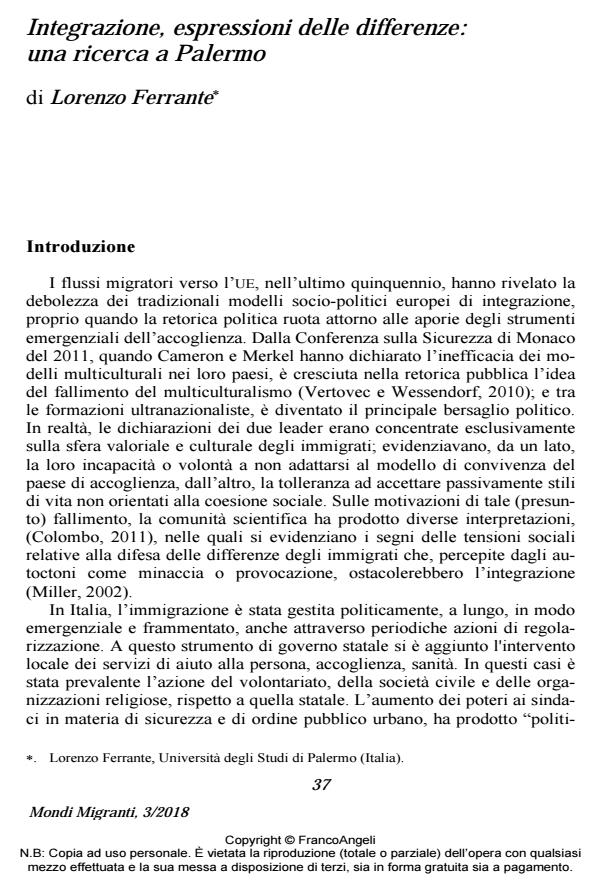Integration, expressions of differences: A research in Palermo
Journal title MONDI MIGRANTI
Author/s Lorenzo Ferrante
Publishing Year 2018 Issue 2018/3
Language Italian Pages 22 P. 37-58 File size 223 KB
DOI 10.3280/MM2018-003003
DOI is like a bar code for intellectual property: to have more infomation
click here
Below, you can see the article first page
If you want to buy this article in PDF format, you can do it, following the instructions to buy download credits

FrancoAngeli is member of Publishers International Linking Association, Inc (PILA), a not-for-profit association which run the CrossRef service enabling links to and from online scholarly content.
The migratory phenomenon to the EU in recent decades showed the weakness of integration models. On the social level it was not possible to rule a change of coexistence today improcrastinabile. Immigrant communities populate our cities, work, eat, meet, and they do not stop practicing their religious and cultural expressions of origin. What role plays the expression of differences, adaptation model, in the local integration processes? These dynamics have been analyzed in research carried out in Palermo, whose main results are presented in this paper.
Keywords: Integration, differences, multiethnicity, identity, adaptation, values
- "Valore di legame" e contrasto alla povertà. Welfare di comunità nel centro storico di Palermo Emanuela Chiodo, Antonella Coco, in WELFARE E ERGONOMIA 2/2023 pp.89
DOI: 10.3280/WE2022-002007
Lorenzo Ferrante, Integrazione, espressioni delle differenze: una ricerca a Palermo in "MONDI MIGRANTI" 3/2018, pp 37-58, DOI: 10.3280/MM2018-003003